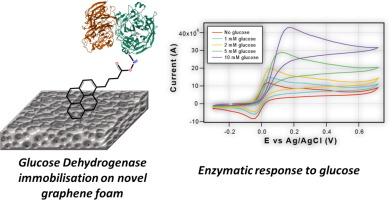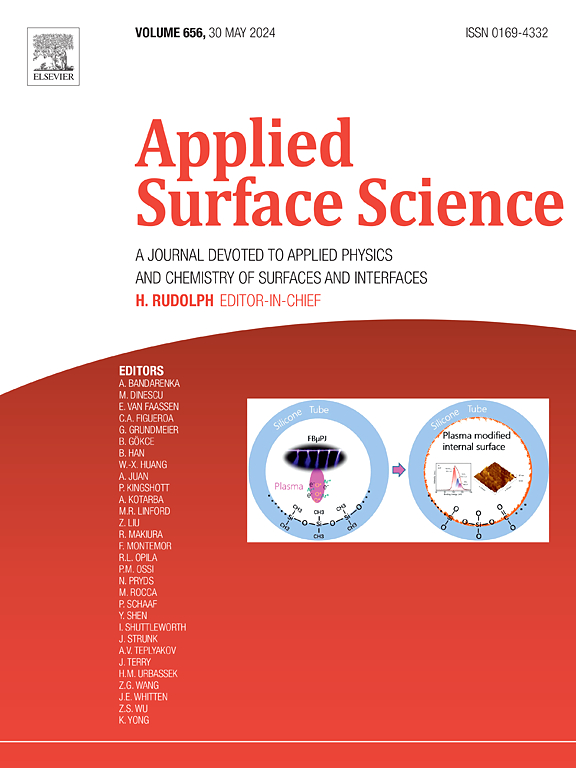对石墨烯(Giii-Sens)实施简单的功能化,以确定生物催化设备中使用的合适连接剂
IF 6.3
2区 材料科学
Q2 CHEMISTRY, PHYSICAL
引用次数: 0
摘要
我们采用单步法,用 1-芘丁酸 N-羟基琥珀酰亚胺酯(Pyr-NHS)对三维泡沫石墨烯(Giii-Sens)电极进行了功能化。随后,通过拉曼光谱、X 射线光电子能谱和场发射扫描电子显微镜对这些功能化电极的物理和化学特性进行了探测。结合循环伏安法和电阻抗光谱法获得的数据,我们证实了石墨烯泡沫表面存在足够数量的 Pyr-NHS,可作为合适的连接剂将葡萄糖脱氢酶 (GDH) 固定在电极上。通过电化学特性分析提供了这种固定化的证据,然后通过电极表面葡萄糖的介导氧化,证明了葡萄糖脱氢酶的活性酶反应。葡萄糖浓度与氧化还原介质对氨基苯酚产生的阳极电流峰值之间的比例关系导致测定出 22.7 µA/mM/cm2 的高灵敏度和 5.25 µM 的检测限。这一结果证实了这些功能化石墨烯泡沫电极作为微型化葡萄糖生物催化设备(包括酶生物燃料电池和生物传感器)中无金属高性能阳极的可行性。本文章由计算机程序翻译,如有差异,请以英文原文为准。

Implementation of a simple functionalisation of graphene (Gii-Sens) in the determination of a suitable linker for use in biocatalytic devices
We adapted a single-step method to functionalise three-dimensional graphene foam (Gii-Sens) electrodes with a 1-pyrenebutyric acid N-hydroxysuccinimide ester (Pyr-NHS). The physical and chemical properties of these functionalised electrodes were subsequently probed via Raman spectroscopy, X-ray photoelectron spectroscopy, and field-emission scanning electron microscopy. Combined with data acquired from cyclic voltammetry and electrical impedance spectroscopy, we confirmed the presence of Pyr-NHS on the surface of the graphene foam in sufficient quantity for it to serve as a suitable linker for the immobilisation of the enzyme glucose dehydrogenase (GDH) on the electrode. Evidence of this immobilisation was provided through electrochemical characterisation, before demonstrating an active enzyme response from GDH via the mediated oxidation of glucose at the electrode surface. A proportional relationship between the concentration of glucose and the peak anodic current from the redox mediator p-aminophenol led to the determination of a high sensitivity of 22.7 µA/mM/cm2 and a limit of detection of 5.25 µM. Such a result confirms the viability of these functionalised graphene foam electrodes as a metal-free high-performing anode within miniaturised, glucose-based biocatalytic devices, including enzymatic biofuel cells and biosensors.
求助全文
通过发布文献求助,成功后即可免费获取论文全文。
去求助
来源期刊

Applied Surface Science
工程技术-材料科学:膜
CiteScore
12.50
自引率
7.50%
发文量
3393
审稿时长
67 days
期刊介绍:
Applied Surface Science covers topics contributing to a better understanding of surfaces, interfaces, nanostructures and their applications. The journal is concerned with scientific research on the atomic and molecular level of material properties determined with specific surface analytical techniques and/or computational methods, as well as the processing of such structures.
 求助内容:
求助内容: 应助结果提醒方式:
应助结果提醒方式:


